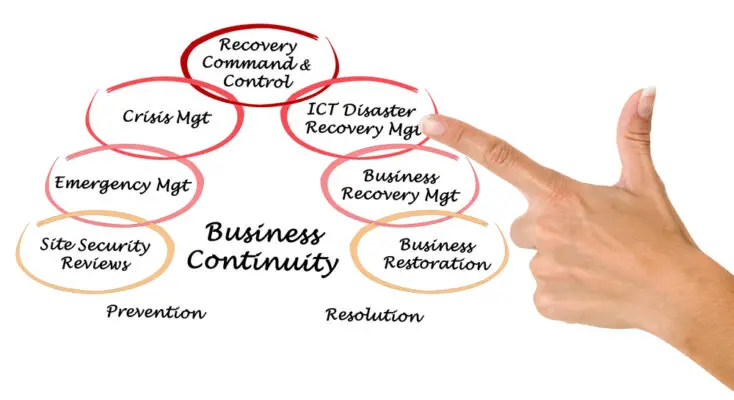Risk assessments are crucial for identifying and managing potential organisational or project risks. One key aspect of a risk assessment is identifying critical components, essential elements that could significantly impact the overall risk profile.
Defining these critical components accurately ensures that appropriate mitigation strategies can be developed and resources can be allocated effectively.
The definition of critical components in a risk assessment involves considering several factors. Firstly, the likelihood of an event occurring must be assessed, considering historical data, expert opinions, and any relevant external factors.
Secondly, the event’s potential impact must be evaluated in terms of financial loss, reputational damage, or other significant consequences.
Additionally, the vulnerability or exposure to the event should be analyzed to determine how susceptible the organization or project is.
Organizations can prioritise their resources effectively and develop appropriate mitigation strategies by understanding and defining these critical components precisely during a risk assessment process.
This article will delve deeper into each component’s definition to provide readers with a comprehensive understanding of how they contribute to overall risk management efforts.

Likelihood of an Event Occurring
Measuring the likelihood of an event occurring is a critical component in conducting a risk assessment, as it helps prioritize resources and determine the level of preparedness required.
Risk assessment involves evaluating potential risks and their associated probabilities, allowing organizations to make informed decisions regarding risk management strategies.
Organizations can effectively allocate resources and implement necessary measures to mitigate risks by quantifying the probability of events, such as natural disasters or security breaches.
This process enables businesses to identify high-risk areas that require immediate attention, ensuring that preventative actions are taken before an event occurs.
Furthermore, assessing the likelihood of events allows for better planning and resource allocation, reducing the impact on operations and minimizing financial losses.
Including the probability of events in risk assessments improves organizational resilience and helps in implementing effective risk management practices.
Potential Impact of the Event
One important aspect to consider when evaluating the potential impact of an event is its ability to disrupt normal operations and create significant financial losses.
The recovery cost is critical in assessing the potential impact, as it encompasses all expenses required to restore operations back to normal.
This includes not only direct costs, such as repairing damaged infrastructure or replacing equipment, but also indirect costs, including loss of productivity, business interruption, and reputational damage.
Additionally, stakeholder communication plays a crucial role in managing the potential impact of an event.
Effective communication with stakeholders such as employees, customers, suppliers, and regulatory bodies is essential for minimizing the negative consequences of an event and restoring confidence in the affected organization.
Considering both the cost of recovery and stakeholder communication, organizations can better evaluate the potential impact of an event and develop strategies to mitigate its effects.
Level of Vulnerability or Exposure
Underestimating the level of vulnerability or exposure to potential risks can leave organizations susceptible to significant disruptions and financial losses.
In the context of risk assessment and risk management, determining the level of vulnerability or exposure is crucial to mitigate risks and develop appropriate strategies effectively.
The level of vulnerability refers to the degree to which an organization’s assets, systems, or processes are susceptible to harm or negative impacts caused by a risk event.
It involves assessing weaknesses, deficiencies, and dependencies within the organization that potential risks could exploit.
On the other hand, exposure refers to the extent to which an organization is likely to encounter a specific risk event due to its geographical location, industry sector, operational activities, or other relevant factors.
Organizations can prioritize resources for effective risk management and ensure business continuity in the face of potential threats by conducting comprehensive analysis and evaluation techniques to accurately assess vulnerability and exposure levels.
Prioritizing Resources based on Critical Components
To effectively allocate resources, it is essential to prioritize based on the most crucial elements within an organization. Resource allocation plays a critical role in risk management, allowing organizations to efficiently and effectively address potential threats.
Prioritizing resources based on critical components involves carefully assessing the risks associated with each component and determining their potential impact on the organisation’s overall functioning.
This process requires a thorough understanding of the organization’s objectives, vulnerabilities, and exposures.
Identifying and prioritizing critical components, organizations can ensure that limited resources are allocated to areas with the highest risks. This approach enables organizations to focus on mitigating significant threats and minimizing potential disruptions.
Effective resource allocation based on critical components enhances an organization’s ability to manage risks proactively and safeguard its operations against potential harm.

Developing Appropriate Mitigation Strategies
Developing appropriate mitigation strategies involves analyzing potential threats and vulnerabilities within an organization, allowing for proactive measures to be implemented to safeguard operations and minimize disruptions.
This process requires a thorough risk analysis, which involves identifying and assessing the likelihood and impact of various risks on critical components of the organization.
Risk management plays a crucial role in determining the most effective ways to mitigate these identified risks.
It involves prioritizing resources based on critical components, and ensuring adequate measures are taken to address vulnerabilities and protect essential functions.
Mitigation strategies may include implementing security controls, establishing backup systems, creating redundancy in processes or infrastructure, training employees on emergency response protocols, and regularly testing and evaluating the effectiveness of these measures.
Organizations can improve their ability to withstand potential disruptions by creating effective mitigation strategies through careful risk analysis and management.
Frequently Asked Questions
What are the key factors to consider when assessing the likelihood of an event occurring?
When assessing the likelihood of an event occurring in a risk assessment, key factors include historical data, expert opinions, statistical analysis, and external factors such as environmental conditions or market trends.
How does the potential impact of an event affect the overall risk assessment?
The potential impact of an event affects the overall risk assessment by considering risk assessment methodologies and impact analysis techniques.
These help evaluate the severity of consequences, determine priorities, and identify appropriate risk mitigation measures to minimize potential harm.
Can you explain the difference between vulnerability and exposure in the context of a risk assessment?
Vulnerability and exposure are distinct concepts in risk assessments. Vulnerability refers to the susceptibility of a system or entity to harm, while exposure relates to the extent of contact with a potential threat.
For example, in assessing flood risks, vulnerability may involve examining the structural integrity of buildings, while exposure would consider factors such as proximity to water bodies.
Are any guidelines or frameworks available for prioritizing resources based on critical components?
Guidelines and frameworks exist for prioritizing resources in a risk assessment. These tools help allocate resources effectively by considering the critical components that need protection, ensuring efficient mitigation and minimizing potential losses.
What are some common strategies for mitigating risks identified in a risk assessment?
Risk mitigation techniques are an integral part of risk assessment best practices. Common strategies include implementing safeguards, transferring risks through insurance, diversifying resources, conducting regular reviews and updates, and establishing contingency plans.

Conclusion
A risk assessment involves identifying and evaluating critical components to manage potential risks effectively.
The likelihood of an event occurring, the potential impact of the event, and the level of vulnerability or exposure are important factors to consider.
Organizations can allocate their efforts more efficiently by prioritizing resources based on these critical components.
Furthermore, developing appropriate mitigation strategies is crucial in minimizing the impact of identified risks.
A thorough risk assessment is crucial for the safety and success of any project or organization.

Chris Ekai is a Risk Management expert with over 10 years of experience in the field. He has a Master’s(MSc) degree in Risk Management from University of Portsmouth and is a CPA and Finance professional. He currently works as a Content Manager at Risk Publishing, writing about Enterprise Risk Management, Business Continuity Management and Project Management.


Brilliant article! Defining critical components in a risk assessment is crucial for a robust risk assessment process. This article provides valuable insights into identifying and prioritising the most significant factors during the risk assessment process. By clearly understanding and defining critical components, professionals can focus their efforts on assessing and mitigating the most impactful risks. The article’s guidance will undoubtedly help enhance risk assessments, ensuring that organisations in the UK have a comprehensive understanding of their potential vulnerabilities and can implement effective risk management strategies. Thank you for sharing this informative piece on critical components in the risk assessment process.
You are always welcome to have a look at the website.